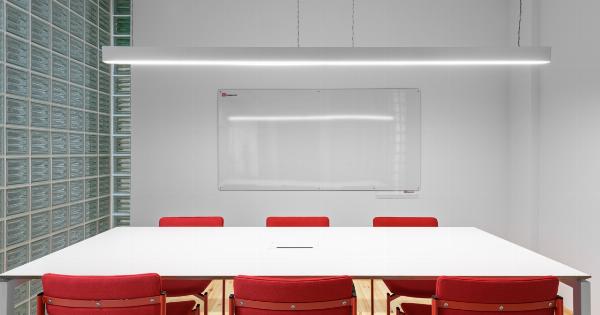School desks are an essential part of the learning environment. However, they may pose a significant risk to spine health, especially in students who spend several hours sitting and studying each day.
The design and ergonomics of school desks can contribute to poor posture habits and spinal issues that can have long-term consequences. In this article, we will explore the dangers of school desks for spine health and provide insightful tips on how to mitigate these risks.
The Importance of Good Spinal Health
Before delving into the hazards of school desks, it is crucial to understand the significance of maintaining good spinal health. The spine is the central pillar of our bodies, providing support, protection, and enabling movement.
A healthy spine ensures proper nerve function and optimal overall well-being. Therefore, any activities or environments that jeopardize spinal health must be addressed to prevent long-term complications.
The Impact of Poor Desk Ergonomics
Most school desks are one-size-fits-all, unable to accommodate the varying sizes and postures of students. This lack of adjustability can lead to several issues, including the following:.
1. Incorrect Sitting Posture
Sitting for extended periods in a poorly designed desk often encourages students to adopt incorrect postures. A common issue is slouching or hunching over the desk, which places unnecessary strain on the spine.
This poor posture can lead to chronic back pain, muscle imbalances, and even structural abnormalities if not addressed promptly.
2. Inadequate Lumbar Support
The lumbar region, or the lower back, is particularly susceptible to strain, given its natural curve.
Unfortunately, most school desks fail to provide adequate lumbar support, leaving the student’s lower back unsupported and prone to discomfort and potential spinal misalignment. Without proper support, the spinal discs in the lumbar region may degenerate, leading to pain and decreased mobility over time.
3. Height Discrepancies
Since school desks are typically not adjustable in height, students of different heights are forced to use the same desks. This leaves taller students hunching over, while shorter students struggle to reach the desk’s surface.
These height discrepancies further contribute to poor posture and can lead to uneven pressure distribution on the spine, potentially causing spinal misalignments or postural abnormalities.
4. Lack of Legroom
Another common issue with traditional school desks is the lack of sufficient legroom. Students often have to squeeze their legs under the desk, leading to discomfort, restricted blood flow, and potential nerve compression.
This cramped position can negatively affect spinal alignment, contributing to conditions like sciatica and other nerve-related problems.
5. Limited Mobility
School desks that restrict movement can impair overall spinal health. Students need to move, shift their weight, and adjust their sitting positions regularly to relieve stress on their spines.
However, the rigid, fixed nature of most school desks prohibits such movements. Consequently, students are forced to remain in one position for prolonged periods, increasing the risk of developing spinal issues.
Preventing Spine Issues with Proper Desk Setups
While the design of school desks may be out of students’ control, there are several steps that can be taken to reduce the risks associated with prolonged sitting:.
1. Promoting Awareness
Educating students about the importance of proper posture and spinal health is essential.
By raising awareness, students will be more conscious of their sitting habits and make conscious efforts to maintain correct posture while studying or attending classes.
2. Encouraging Movement
Teachers can incorporate short breaks into the school day to encourage students to move and stretch. Simple stretching exercises can help alleviate muscle tension and pressure on the spine, reducing the risk of long-term spinal issues.
3. Providing Ergonomic Options
Schools should invest in ergonomic furniture options that cater to different body types and promote proper spinal alignment.
Adjustable desks and chairs allow students to find the most comfortable and supportive position, positively impacting their spinal health in the long run.
4. Using Cushions or Lumbar Rolls
Placing cushions or lumbar rolls on the chairs can provide additional support to the natural curve of the spine. This helps students maintain proper posture and reduces the strain on their backs caused by inadequate lumbar support from school desks.
5. Maintaining Regular Exercise
Encouraging regular exercise is paramount for students’ overall well-being and spinal health.
Engaging in activities such as swimming, yoga, or Pilates can improve core strength, flexibility, and posture, minimizing the negative effects of prolonged sitting in school.
Conclusion
The design and ergonomics of traditional school desks can significantly impact students’ spinal health.
Poor desk ergonomics contribute to incorrect sitting postures, lack of lumbar support, height discrepancies, limited legroom, and restricted mobility. However, teachers, parents, and schools can take proactive measures to mitigate these risks, such as promoting awareness, encouraging movement, providing ergonomic options, using cushions or lumbar rolls, and maintaining regular exercise.
It is crucial to prioritize spinal health and create a conducive learning environment that supports the well-being of students.































